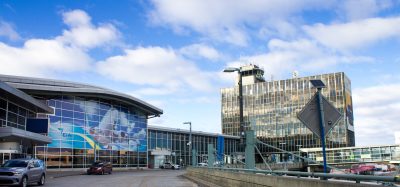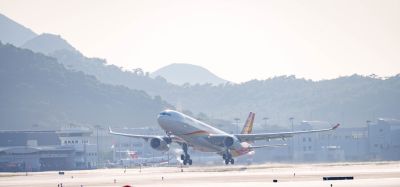Friction testing in Sweden
- Like
- Digg
- Del
- Tumblr
- VKontakte
- Buffer
- Love This
- Odnoklassniki
- Meneame
- Blogger
- Amazon
- Yahoo Mail
- Gmail
- AOL
- Newsvine
- HackerNews
- Evernote
- MySpace
- Mail.ru
- Viadeo
- Line
- Comments
- Yummly
- SMS
- Viber
- Telegram
- Subscribe
- Skype
- Facebook Messenger
- Kakao
- LiveJournal
- Yammer
- Edgar
- Fintel
- Mix
- Instapaper
- Copy Link
Posted: 30 November 2007 | Fredrik Nilsson, Project Manager, Civil Engineering Department, Swedish CAA at Stockholm-Arlanda Airport and Pär Blom, Training officer, Field Department, Stockholm-Arlanda Airport | No comments yet
In the beginning of air traffic history only propeller aeroplanes were used. They had a landing speed of 60-100 km/h, compared to today’s jet aeroplanes which have a landing speed of 250-360 km/h. Therefore, in the past when friction did not seem as important, the airport personnel used their feet to feel if it was slippery or not. In the 1930’s the friction test began to be performed by a bicycle or a car. After the foot friction test, there came a measuring device called ‘tapleymeter’: a small measuring device located in a car. To get a friction value, the car accelerates to 30 km/h and then the driver hits the brakes. This equipment is still in use at smaller airports today.
In the beginning of air traffic history only propeller aeroplanes were used. They had a landing speed of 60-100 km/h, compared to today’s jet aeroplanes which have a landing speed of 250-360 km/h. Therefore, in the past when friction did not seem as important, the airport personnel used their feet to feel if it was slippery or not. In the 1930’s the friction test began to be performed by a bicycle or a car. After the foot friction test, there came a measuring device called ‘tapleymeter’: a small measuring device located in a car. To get a friction value, the car accelerates to 30 km/h and then the driver hits the brakes. This equipment is still in use at smaller airports today.
When jet aeroplanes began to take over air traffic, the friction coefficient had to be more accurate. A project with the Swedish Civil Aviation Administration (SCAA) and the Swedish National Road and Transport Research Institute, started investigating a procedure for friction testing where the friction coefficient could be compared with a braking jet aeroplane. A trailer was built with a weight of 3300 kg and it was manually programmed and towed by a lorry. This was only in use for a short time because it was very difficult to handle.
Over time, an upgraded trailer was developed that had less weight. The weight of the new trailer versions were 1500 kg, 600 kg and 350 kg. All of these trailers have the same structure, with an extra wheel to measure the friction coefficient. The smallest is still in use on larger airports today. The measuring equipment is known as a ‘skiddometer’. In early 1980s, SAAB started to build friction tester automobiles that had the extra wheel under the car (SFT surface friction tester). The Swedish CAA used them in the middle of the 1990s before a new model began to be used.
The new model of friction tester is called SFH (surface friction high-pressure tester) and has a high pressure measuring wheel (700 kPa). The measuring wheel has a constant slip at about 15% and is lowered onto the surface with pressure. A chain transmission then reared the axle and the chain is measured to establish the level of tension. A tight chain indicates a good friction value, while a loose chain means a poor value.
Friction testing performance
There is a general concern over the adequacy of the available friction between the aircraft tyres and the runway surface during certain operating conditions. This is particularly valid in conditions with snow, slush, ice or water on the runway, in connection with aircraft having high take-off or landing speeds. This concern is more acute for jet transport aircraft since the stopping performance of these aircraft is, to a greater degree, dependent on the available friction between the aircraft tyres and the runway surface. Their landing and take-off speeds are high, and in some cases the runway length required for landing or take-off tends to be critical in relation to the runway length available. In addition, aircraft directional control may become impaired in the presence of crosswinds under such operating conditions.
There is a requirement to report the available friction value and presence of snow, slush, ice or water on a runway, as well as to make an assessment of the depth and location of snow, slush or water. Reports of assessment of contaminant depth and the friction value on a runway will be interpreted differently by the operator for departing and landing aircraft. Take-off operators will have to take into account the contaminant drag effect and if applicable, aquaplaning on take-off and accelerate-stop distance requirements based on information which has been made available to them. The friction value is also important for take-off operators if there will be an abruption take-off. With regard to landing, the principal hazards from loss of friction are due to aquaplaning or compacted snow or ice.
At Stockholm Arlanda Airport, an SFH is used to measure the friction on the runways. The friction is measured from 1.0 down to 0.01. If the friction coefficient is 1.0 it means there is a high friction that can be compared with a stop distance as short as 0 metres. However, a friction value of 1.0 is impossible to get. If the friction coefficient is 0.01 it means non-friction and the speed will not decrease. There is a special scale to quote and estimate friction coefficient.
The friction value is measured for the whole length and both sides of the runways at a speed of 96 km/h. The measuring point is 5-10 m from the runway centreline. When the measuring is finished the friction coefficient, together with the contamination, is reported to the air traffic service (ATS) and the flight planning centre (AIS).
To report the condition on the runways, a SNOWTAM is used. SNOWTAM is a special sheet to report when winter conditions appear on an airport. The airport is obligated to control the conditions on the runways four times during a 24-hour period. The 24-hour period starts before the first known take-off or landing in the morning. If the friction coefficient increases more then 0.05 units, the airport must take a new measurement and leave a new SNOWTAM report. In the report, the runway will be upheld in three equal parts and named sections A, B and C.
Section A will always be at the runway with the lowest runway number. When the friction coefficient gets below 0.40 the airport will start to decamp the runways and increase the friction coefficient. Different methods are used; booth, mechanical and chemical treatments. Snow ploughs and snow-blower equipment are used initially and if the friction value cannot be increased to a sufficient level then chemical treatments will be used.
If the friction coefficient is above 0.40, aircraft operators do not need to take the friction coefficient into consideration during landing or take-off. At Stockholm Arlanda Airport, the goal is to have summer conditions on the runways even in the winter.

















